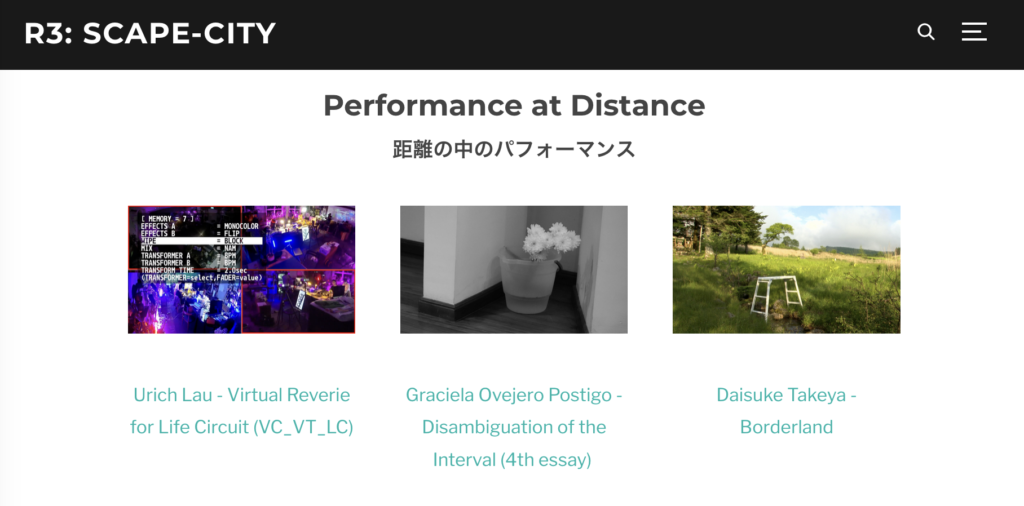


R3
R3 Scape-City is a new challenge of creating critical dialogue between art and society by deciphering long-term relationships of nature, history, and culture in the Suwa Basin. The Suwa Basin is an area located in the central highlands region of Japan. Surrounded by steep mountain ranges such as Yatsugatake and Kirigamine, the basin area has nurtured unique culture through continuous relationships between human communities and the natural environment. By focusing on “borderlands” as an ambiguous space that lies in-between community and environment, this project illuminates fresh perspectives to re-capture a human community from outside of it, and thus sheds new light on contemporary issues and problems of our society.
For this purpose, we conducted a series of field research at various sites around the basin area, discussed philosophy, culture, and spirituality that have sprung up through interactions between humans and nature in the borderlands, and created performance-art works on this theme. Tracing an abandoned trade route in Wada-Toge Pass, Mineki Murata reconsidered the physical difficulty people once encountered in the “movement” across the borderlands. In the deep valley where people mined and traded obsidian in the prehistoric age, Miri Hamada explored primordial meanings of “transportation.” Drawing on a “ritual” developed in the religious tradition of Suwa, Daisuke Takeya unveiled critical aspects of faith and spirituality rooted deeply in the local community. In the forest behind the precincts of Suwa-Taisha Shrine, Takumichan attempted to “respond” to the historical gravity of the sacred site. Yuzuru Maeda sought new paths for the “succession” of philosophy, culture, and spirituality nurtured in the borderlands to the future generations.
The story of Suwa does not end in the mountains. The philosophy, culture, and spirituality evolved in Suwa have been transmitted to various localities beyond the borderlands. In the modern period, the Suwa Basin became one of the major centers of the silk industry in Japan. Crossing over the surrounding mountains, people transported raw silk from the basin area to the port of Yokohama, from which the raw threads were exported to Europe and North America. Whereas natural environment around the Suwa Basin has functioned as mountain borderlands, Port City Yokohama has developed as maritime borderlands between Japan and other countries, a border city where diverse groups of people have mingled with each other. By looking into historical connections between Suwa and Yokohama, this project reconsiders insights gained in the mountain borderlands from transnational perspectives of the maritime borderlands, and thus demonstrates cultural significance of the “in-between” space in contemporary society.